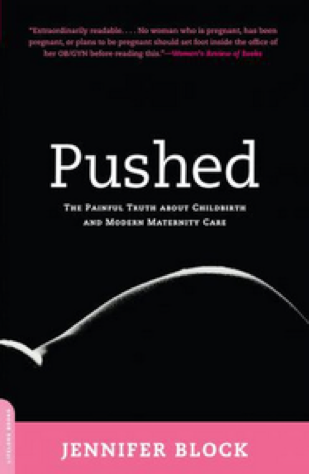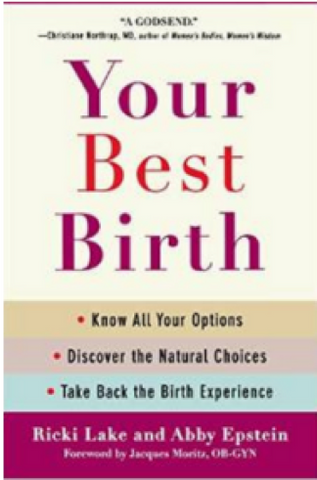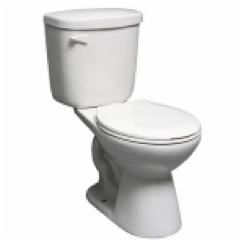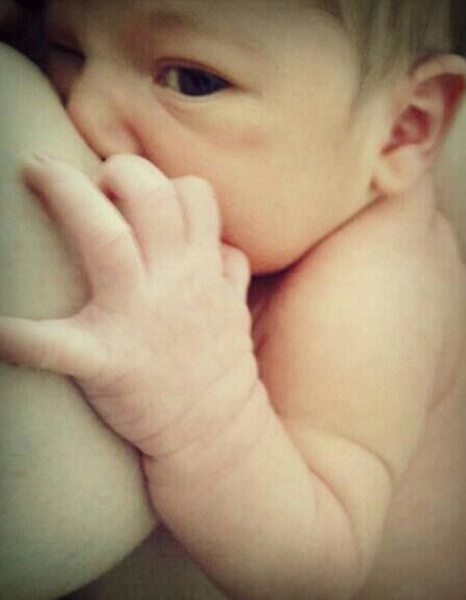
My Postpartum Life: 9 Things No One Tells You About After the Baby Comes Out…

Being pregnant is pretty amazing. Literally billions of women have done this before you but when YOU get pregnant it still feels incredibly special. And incredibly daunting.
Once you see those two pink lines there is only 9 months to get a lot done. What?!?!?!?! If I took a positive pregnancy test I’m probably already at least 4 weeks pregnant? OK, 8 months to get it all done.

Photo Credit: BabyMed
You may feel an immediate need to go buy a pregnancy book and “cram” for what the heck is happening in your uterus. You devour the first four or five chapters, then get freaked out and/or bored and hide said pregnancy book. Or maybe you become obsessed with the registry. So many women do. If you could have the perfect crib mattress and right number of swaddling blankets things will be ok. And if you don’t want 27 yellow baby towels, you should create a registry. This is done online because those big box baby stores will scare the s*it out of you and confirm that you are indeed not financially stable enough to have a baby. Spoiler: you need about 10% of the stuff on the“suggested” registry list (note: there are many articles written about this like this one, this one and this one). But if you find yourself comparing stroller reviews on more than 5 websites at 1 am. Step away from the laptop.



Books, Books, Books - there are just soooooooooo many books out there...
Either way most woman realize around the 7th month mark that this thing really is coming out and you have no idea how (see: hiding pregnancy book) so you sign up for a childbirth class and there will be videos. Of actual BIRTH. But you take it anyway and you even keep your eyes open. Maybe you take the newborn care class too, because rumor has it that once you have the baby you get to (read: have to) take it home and care for it for the next 18-34 years.
With the amount of time and effort you have spent preparing for this baby you’d think there would be no stones left unturned. But in new mom groups and message boards all over the country, someone is sharing a “no one told me about THAT story”. And they tend to focus on what happens immediately AFTER the baby comes out.

Perhaps you never did put that laptop down and you are still adding and deleting things from your registry in the wee hours. Woman give birth everyday, you can just “wing it” right? As a childbirth educator I suggest you don’t, but I’ll let you keep reading too.
So what can you anticipate happening in the first 5 minutes? 5 Hours? 5 days after childbirth?
Read on.
First 5 minutes
1. Cord Clamping
50 years ago dads weren’t with laboring women in the delivery room. But today’s modern parents are “in this together”. Since dad can’t carry the baby, or labor or push, we’ll let him cut the cord! Totally the same thing. A lot of dad’s really do feel excited about their “job” in the delivery room because it makes them feel more involved in this momentous thing their wife just accomplished (they basically just witnessed you being superwoman).
But don’t rush! Studies show that delaying clamping and cutting the cord by at least 1 minute can increase an infants hemoglobin levels and help prevent iron deficiency in the first 3-6 months. Your doctor will clamp the cord before Dad cuts it, so make sure you have a conversation with your doctor BEFORE the baby comes out, letting her know that you want to delay the clamping.
2. Giving “birth” to the Placenta
You’ve labored; you’ve pushed and now finally met your baby. Dad cuts the cord (after 1 minute!) and you’re in skin-to-skin new family bliss. But wait! There’s more! Is that another contraction you feel?! You still need to deliver the placenta (referred to as the third stage of childbirth). Besides making a human, No Big Deal, you also created a whole new organ! The placenta has been delivering oxygen and nutrients to your baby via the umbilical cord and once your baby is delivered the uterus will continue to contract to expel it.
This could take an average of 5-20 minutes (or more) naturally, but doctors are sometimes anxious to deliver the placenta and make sure your uterus is contracting down to its previous size and there is no sign of hemorrhage. They may even “massage” your abdomen or gently pull on the umbilical cord to move things along. This one falls into the category of wide range of experiences. Some woman don’t even notice the delivery of the placenta, others fall in to the “No one said anything about THAT” group. You have been warned.


3. Using the bathroom
After giving birth the thought of anything else exiting “down there” can be a little terrifying. Even the thought of peeing can make you cringe. But sooner or later nature will need to take its course, don’t put it off! It will just make it worse. Even if you have stitches, they were made to withstand the pressure. Drink LOTS of water, as a bonus it’s a good habit to get into while breastfeeding. Make sure you take the colace they will give you at the hospital and have some at home too. This should help keep things “comfortable”. Use the squirt bottle for rinsing afterward and keep some cold witch hazel pads handy for calming swelling and irritation.
And in the toilet there will be blood, more than you think (discussed in our previous post). It’s totally normal and will start to decrease as your uterus shrinks down. I know, the last paragraph made you reconsider what you have gotten yourself into. But I promise, if you follow these tips it will all “come out” ok. I couldn’t resist...


4. Keeping mom/baby together
When your mother gave birth she may recall sending you to “the nursery” while she recovered. Babies would be returned every 3 hours or so for feeding and then brought back to the nursery. This practice is starting to disappear. We know now that keeping mom and baby together is best, and many hospitals are working on earning their “baby friendly” designation from WHO which includes encouraging 24 hour rooming in. Keeping baby close helps promote breastfeeding (which should be done “on demand” not on a three hour schedule) and bonding.
For this reason it’s also best to turn down baby’s first bath at the hospital (WHO's recommendation here). A bath can cool down baby’s core temperature, causing her to be kept under warming lights until it comes back up and prolonging the separation from you. How silly! You know what’s the perfect warmer? Mom’s chest. Wiping baby down and having the first bath at home is what I recommend to all my clients.
Skin to Skin wit both mom and dad

Photo: Andria Lindquist
5. Hospital Procedures
There are plenty of decisions you may need to make during your hospital stay. Shared room or private? Circumcision? And of course officially naming your baby. But two things that usually aren’t up for debate are giving your new baby a Vitamin K injection and antibiotic eye drops.
Vitamin K is given in the rare chance your baby has an undiagnosed clotting disorder and the eye ointment is given to protect your baby’s eyes from possible infections transmitted during birth. Both of these were traditionally done within the first 5-10 minutes after birth. Your baby would be wiped down, weighed, diapered, receive the Vitamin K and eye drops, be swaddled and returned to you. Sometimes in the blur of childbirth this is exactly how it happens. If it is, I encourage you to unwrap your baby and put them skin-to-skin so you can start the bonding process and get ready to start breastfeeding.
Even more optimal would be holding your baby skin-to-skin from the get-go and delaying these procedures for the first hour. You can even ask they be done on your chest. Tell the nurse and pediatrician in the room that that’s what you would prefer and enjoy those first minutes together!

Photo: Andria Lindquist
First 5 Days:
1. Milk Coming in
Even before you gave birth your body was making baby’s first milk, colostrum. This nutrient dense powerhouse is what baby will receive in those first days at the hospital. But when your placenta was expelled it signaled to your body to start making mature breast milk, which should be noticeable around day 2-4. Some women feel a heavy“full” feeling in their breasts and may start leaking between feedings. Others feel as though their chest has been replaced with a recently augmented starlet’s (as discussed in our previous post). Sorry Hubby, these aren’t for you!
To keep those rock hard boobs comfortable make sure you are breastfeeding OFTEN and emptying one side before moving to the next. If your breasts are so engorged that baby is having trouble latching, hand express a little milk into a cloth to soften things up first. In between feedings try cool compresses. Pretty soon things will start calming down and you can start wearing shirts again. Until then you may want to limit visitors.

2. Healing “down there”
After giving birth your baby will be seen at the pediatrician’s office the day after you get home, a week after that and the week after that. You, the one with the stitches and the non-existent pelvic floor? See ya in 6 weeks!
If you tore during delivery try and take a look at your stitches with a hand mirror before going home. Yes, I said that. But that way you can keep an eye on things back at home to make sure everything is healing ok. Take it SLOW. My first day home with my firstborn I attempted to walk to the bagel store 5 blocks away. We needed to take a cab home. Don’t overdue it and things will heal much faster than you anticipate. That being said, contact a pelvic floor specialist if things just don’t feel “right”. Yes, there is physical therapy for your pelvic floor, don’t knock it and your bladder control and sex life will thank you.
3. Hormones
Baby Blues. Weepy. Emotional. Whatever you call it, it can sometimes catch us off guard. You were so excited to become a mom, so why can’t you stop crying? Besides the physical and emotional experience of birth just barely out of your rearview mirror, your hormones are adjusting from being pregnant to caring and nourishing a newborn. It takes a little while to feel like you again. I famously had a complete breakdown because no one had brought me any soup during week one. If you still don’t feel like yourself after the first few weeks, it may be a sign that things are more serious. While much less common, it’s OK to feel like you can’t get out of this fog by yourself. Ask for help. Tell your OB, your partner, your neighbor, just tell someone. And partners? Be patient, be kind and make her some damn soup.

Photo: Samethewiser via CupofJo

A Childbirth Educator and a Certified Lactation Counselor, Hilary Baxendale has been working with families and newborns in the New York area since 2004. Raised in Rhode Island, educated in Boston and married to an English charmer, Hilary calls Hastings-on-Hudson home with her charming family that includes two young sons. Known for her hilarious and practical (aka brutally-honest) advice on all things childbirth, breastfeeding, postpartum self-care and newborn care, she teaches group classes at CityBirth in Manhattan and leads a weekly New Mom Discussion Group. Find more about her at hilarybaxendalechildbirth.com
